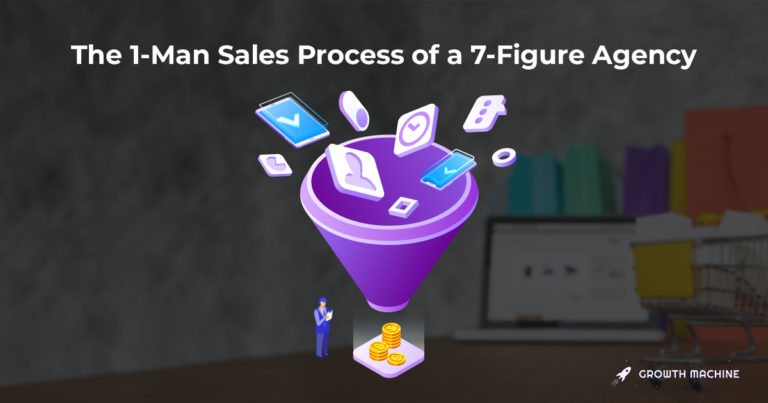The Long Game: How Long-Form Content Can Help You Build a Loyal Following
A content strategy can lead to serious gains in your SEO rankings, brand reputation, and lead generation. The only catch? You need to create content that knocks your audience’s socks off.
Investing in long-form content is one of the best ways to stand out on search engine results pages (SERPs) and bring more visitors to your site. But writing long-form copy is anything but easy: It requires understanding your audience, delivering value, and maintaining readers’ attention for an extended period of time.
Check out this guide to learn what long-form content is, why it’s so helpful to businesses, and a few quick tips to help you write and promote long-form content.
What Is Long-Form Content?
Long-form content is an in-depth piece of content that goes into a deep dive on a specific topic. This typically applies to written content like blogs, but it can also refer to videos or podcasts.
There’s no official word count or length of time for a piece to qualify as “long-form.” Many people consider blogs over 2,000 words to be long-form. For videos and podcasts, it’s usually content longer than ten minutes.
The goal of long-form content is to create the most comprehensive overview of a topic in your niche. You want to provide so much value to the audience that they trust you as a source of information.
What Is an Example of Long-Form Content?
Semrush’s 2023 content marketing statistics guide is a great example of a long-form post. At nearly 3,000 words, it’s an estimated 12-minute read, but the huge amount of copy up is broken into helpful sections to make it easy to read. Semrush conducted its own research for this guide, which people continue to consult and link to in their own content. If you look on the right-hand side of the page, you’ll see that this guide has well over 9,000 backlinks!
Not to toot our own horn, but the Growth Machine podcast is a great example of long-form audio content. The episodes range from 30 to 60 minutes long, featuring interviews with internal stakeholders as well as experts.
The outdoor clothing retailer Patagonia has another great example of long-form content. This 27-minute video not only features their products, but also tells an engaging story in a mini-documentary style that keeps viewers on the edge of their seats.
What Is Long-Form Content vs. Short-Form Content?
When you start the content creation process, you’ll need to plan a mix of short-form and long-form content.
Short-form content is usually under 1,000 words for blogs, but no one can officially agree on a definition. The goal of a short-form piece of content is to quickly answer a question. This is ideal if you want to rank for the Featured Snippet on the Google search engine results page. Short content respects your audience’s time by quickly providing a helpful answer.
The length of copy you create really depends on the medium. For example, long-form content can be a great fit for your website, LinkedIn, or YouTube channel. Short-form is usually better for email, Twitter, or Instagram.
Is Long-Form Content Better?
There’s no clear winner in the tug-of-war between long-form and short-form content. Both types of content have a place in a content marketing strategy, which is why many brands create a mix of short and long-form content. In fact, you can route people from your short-form pieces to your long-form pieces, and vice versa.
With that said, many brands prefer investing in long-form content because it helps build your search engine presence more effectively. Since short-form content answers a question quickly, it doesn’t keep users on your site very long, which can lower your site’s relevance in the eyes of the search engine algorithms.
There are many benefits of long-form content, including:
- Improved search engine optimization (SEO): Search engines want to route users to the most comprehensive guide on a given topic, which is why the algorithm often rewards long-form copy. As long as you deliver value, you can boost your page’s rank on a SERP with longer content.
- Increased lead generation: When people find a quality piece of content, they share it with their network. Adding a call to action (CTA) in a long-form piece of content can also encourage leads to engage with you, so you can start nurturing a relationship that might eventually lead to a sale.
- Improved subject matter expertise: High-quality long-form guides show people you know what you’re talking about. If you create enough quality content, people will continue to link to your site and trust your brand as an authority. This can also help your brand build a reputation that draws new readers to your site.
- Higher website traffic: Long-form content is often more effective than short-form content because readers will usually revisit the longer pieces. Normally, a reader checks a blog once, gets information, and never comes back. But long-form content serves as a type of guide that people will visit over and over again as reference material. They’ll spend even more time on-site and become more familiar with your brand.
5 Quick Tips for Writing Better Long-Form Content
Long-form content has so many benefits for brands, but writing it is no picnic. It can be hard choosing the right topics for your audience, and you also need to create quality content people will want to read. Follow these five tips to write better long-form content without the steep learning curve.
1. Understand Your Target Audience
First things first: Find out who you’re writing for. A Gen X audience and a Gen Z audience will expect to see different topics and content formats, so understanding your audience is critical to creating high-quality long-form content. Get clear on your audience’s search intent to ensure you actually answer the questions they’re asking.
2. Have a Content Marketing Plan
It’s easy to go on off-topic tangents or fill a piece with fluff if you don’t know what to say, and that’s why it’s crucial to create a plan for your long-form content. You need to provide valuable information throughout a long-form piece, so make an outline. Add high-level points in your headers and include plenty of examples and statistics to keep people engaged.
It’s also critical to create long-form content consistently. Your followers crave consistency, and if they know you produce one long-form piece each month, they’ll know to check out your site for regular updates. It also doesn’t hurt that consistent content creation is also a win for SEO.
If you want to write long-form content but aren’t sure where to even begin, work with Growth Machine. Our team of experienced SEO writers can produce several optimized pieces of long-form content for your brand on a weekly basis.
3. Maintain Attention Spans
Long-form content is a little risky because it can lose your readers’ interest. People have to be really motivated to engage with the content from start to finish. That means you have to work extra hard to maintain their attention throughout the piece.
One way to do that is to optimize your content for readability. That might mean:
- Writing for a ninth-grade reading level, if possible.
- Adding a table of contents.
- Using a fun, engaging, and even humorous tone. Even if your company‘s tone is professional, it’s less likely that people will want to stick with a piece that feels like a college textbook. Long reads need to be interesting!
- Adding graphics and formatting the content for scanability. Stay away from stock photos and focus on custom graphics, like infographics or charts, that add value to the content.
4. Check Your Metrics
Long-form content requires a lot of effort, and that effort should make a difference for your business. Check your metrics to ensure you’re creating successful content. That means monitoring your search engine results, like keyword and page rankings, as well as engagement metrics like conversion rates.
If your long-form content isn’t performing well, you can try:
- Creating content in a different format: If you’re consistently publishing long-form blogs and they aren’t performing, try creating video content.
- Reworking your strategy: Look at the keywords you’re using and determine if they get enough traffic to make a tangible difference for your business.
- Rethinking your audience: Are you targeting the right people? Does your long-form content include information that’s actually helpful to this audience? Send out surveys or conduct interviews with your target audience to learn about their most pressing pain points.
5. Try Different Content Formats
Blog listicles are a mainstay for content marketing, but don’t be afraid to use a mix of different types of content. Jazz things up by creating long-form content like:
- Helpful templates and checklists
- Step-by-step tutorials with screenshots
- White papers
- Case study or expert interview podcasts
- Webinars
- Case studies
- Video content that includes tutorials or in-depth reviews
This doesn’t need to be new content, either. You can repurpose old content to get more mileage out of your topic ideas. For example, you can take your highest performing blogs and transform them into longer YouTube videos that expand on the topic.
How Do You Promote Long-Form Content?
After you create the content, it’s time to get eyes on it.
Social media is a great place to start. Add a widget to your blog that allows for social shares on LinkedIn, Facebook, Instagram, and Twitter. Since long-form content contains a lot of information, use social media to share a few valuable snippets to tease your followers. If they want the full scoop, they’ll check out the full version.
Short videos like Instagram Reels can be a great way to share highlights from a piece of long-form content. You can also break a longer piece down into a bulleted outline for posts on LinkedIn or Facebook.
If your content features an industry subject matter expert, ask them to share the content with their network. This can help you attract a new audience to your brand.
You can also promote long-form content via paid ads on Google, Facebook, or Instagram. This is especially helpful if you want to gate the content and collect email addresses for lead generation.
The Secret Weapon for Consistent Long-Form Content
Long-form content requires a lot of elbow grease. From audience targeting to creating a content marketing strategy, it isn’t easy to create long-form content, but it’s worth your while. Long-form content can help you generate more leads, build your reputation, and increase your search engine rankings. Follow these tips to write better long-form content:
- Understand your audience
- Make a plan
- Maintain your audience’s attention
- Create different types of content
- Check your metrics
The trick to long-form content is consistent content creation. That’s a challenge for even the biggest, most seasoned businesses. If you want to reap the benefits of long-form content but don’t have the capacity to write it internally, partner with Growth Machine. Schedule a chat with us to start creating regular, high-quality content that gets results.







